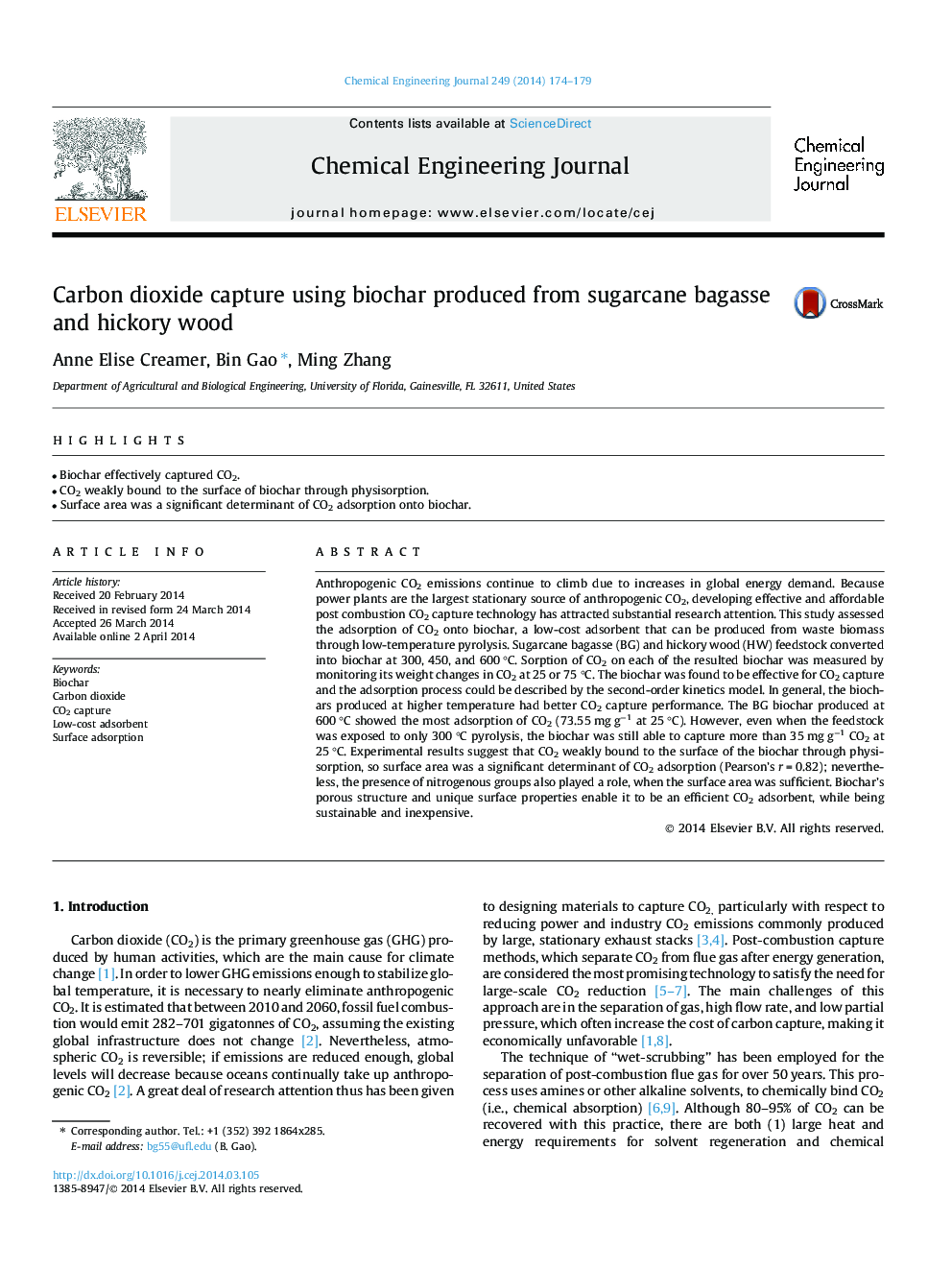| Article ID | Journal | Published Year | Pages | File Type |
|---|---|---|---|---|
| 147404 | Chemical Engineering Journal | 2014 | 6 Pages |
•Biochar effectively captured CO2.•CO2 weakly bound to the surface of biochar through physisorption.•Surface area was a significant determinant of CO2 adsorption onto biochar.
Anthropogenic CO2 emissions continue to climb due to increases in global energy demand. Because power plants are the largest stationary source of anthropogenic CO2, developing effective and affordable post combustion CO2 capture technology has attracted substantial research attention. This study assessed the adsorption of CO2 onto biochar, a low-cost adsorbent that can be produced from waste biomass through low-temperature pyrolysis. Sugarcane bagasse (BG) and hickory wood (HW) feedstock converted into biochar at 300, 450, and 600 °C. Sorption of CO2 on each of the resulted biochar was measured by monitoring its weight changes in CO2 at 25 or 75 °C. The biochar was found to be effective for CO2 capture and the adsorption process could be described by the second-order kinetics model. In general, the biochars produced at higher temperature had better CO2 capture performance. The BG biochar produced at 600 °C showed the most adsorption of CO2 (73.55 mg g−1 at 25 °C). However, even when the feedstock was exposed to only 300 °C pyrolysis, the biochar was still able to capture more than 35 mg g−1 CO2 at 25 °C. Experimental results suggest that CO2 weakly bound to the surface of the biochar through physisorption, so surface area was a significant determinant of CO2 adsorption (Pearson’s r = 0.82); nevertheless, the presence of nitrogenous groups also played a role, when the surface area was sufficient. Biochar’s porous structure and unique surface properties enable it to be an efficient CO2 adsorbent, while being sustainable and inexpensive.
